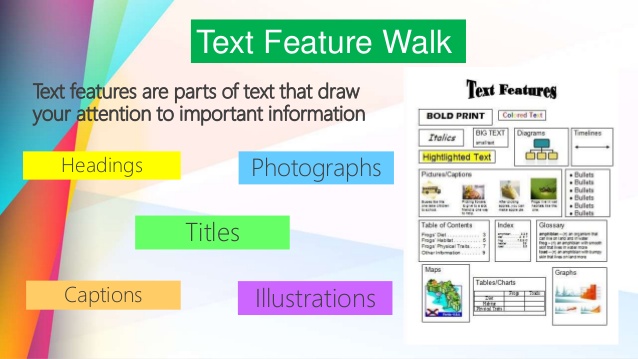Feature Walk
What It Is
The Feature Walk allows students to get out of their seats and work in small groups as they analyze important features presented in their textbooks or in related online resources. This technique is excellent when you don’t want students to overlook important images or text features that can support their understanding of content.
Features refer to pictures, diagrams, charts, maps, sidebars, figures, tables, bulleted lists, quotations, citations, sample problems, and any other supports included in the text to aid comprehension of the text. These can be pulled directly from your text or from related resources. This technique requires some preparation, but once you’ve tried it, it’s an activity that can be saved and reused, with the same or modified prompts.
Preparation
Before you teach, choose four features from your course text or related resources and make enlarged (8 ½ x 11”) copies of them. Post them on the walls of the classroom prior to the activity. Make sure that the features encapsulate one of the major points or big picture concepts of your lesson.
Prepare enough pictures so you can have one group of about four students standing at each feature posted around the room (e.g., one set of 8 features or two sets of 4 features).
Select a prompt that best fits your overall goal for this activity. You can also select several prompts by assigning the posting certain ones next to their corresponding pictures and features.
Possible Prompts
- What meanings are embedded in this text feature that could not easily be explained using simple text? How does this feature enhance what you understand about this topic?
- Why would I have selected this picture or text feature as an important one to focus on today? What is the big picture message being conveyed in this feature?
- Who might dislike or disagree with what this text feature is getting at? Why?
- Brainstorm all the people or things that are directly and indirectly affected by the meaning behind this text feature. Tell me how they are affected. As you talk, jot down these insights so you can share them with the group.
- The most important thing about this picture or text feature is…
How It Works
Place students in groups of no more than four. (The smaller the groups, the more each student will participate.) As students to reflect on the text feature and jot down some thoughts as they relate to your selected prompt. After a minute or two, ask the students to stop and share their thoughts with others in the group.
Stop the class and ask all students to move in the same direction (clockwise or counterclockwise) to the next feature posted. Ask them to silently process and then repeat the process of sharing for the next text feature.
Repeat until all groups have discussed the features.
How to Ensure Higher-Order Thinking
With the movement inherent in this lesson, it is easy to forget the 30-second to 1-minute silent period where students are first allowed to process and think about each picture or text feature. This individual processing time allows students to analyze the content on their own, rather than having their thoughts funneled into one way of thinking.

Source
Himmele P., and Himmele, W. Total Participation Techniques: Making Every Student an Active Learner. ASCD, 2017, pp.83-85.
